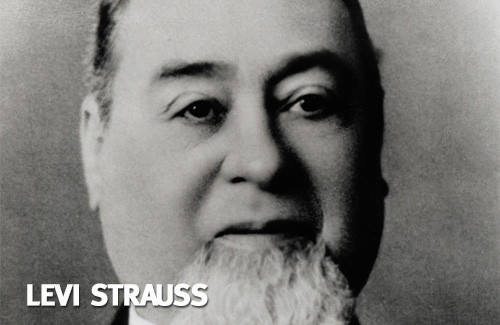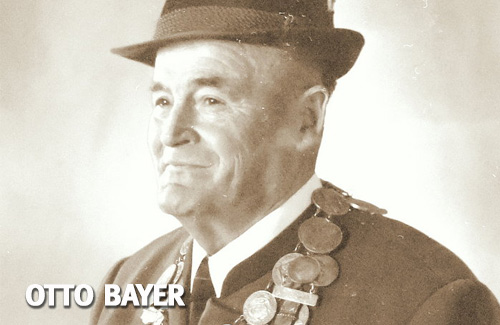
While rollerblading as we know it is originally a creature of the 20th century, many of the inventions and innovations that enable its existence come from the 19th century or earlier. Several of these inventors are household names, but the rest of the list consists of the industrialists and chemists who invented the materials crucial to the culture and manufacture of rollerblading. Their histories and connections to the extra-blading world may surprise you.
#8

As head of the research department at DuPont 80 years ago, American Wallace Carothers is credited with inventing two of Rollerblading’s most prized materials: Nylon and Neoprene. Nearly all boot, frame and soul frame components of modern rollerblades are made from Nylon, and Neoprene finds extensive use in everything from skate liners to kneepads. After battling depression for decades, Carothers committed suicide in 1937.
#7

The Germans really were the pioneers of industrial chemistry during the 19th century, and Reichenbach was one of their greatest contributors. Educated at the prestigious University of Tübingen (once home of intellectual giants like Johannes Kepler and Frederick Hegel), Reichenbach invented the world’s first synthetic dye and the world’s first antiseptic for commercial use in medical surgeries. His other notable invention with special relevance to rollerbladers is paraffin wax. While originally intended for commercial and industrial uses, this chemically un-reactive petroleum product has saved us from a lifetime of frustration and slow ledges.
#6

Since denim jeans have been the mainstay of blading apparel for the last 20 years, it seems fitting to name Levi Strauss on this list of inventors. The German capitalist immigrated to the United States in 1851 and then moved to San Francisco in 1853 where he began manufacturing the world’s first blue jeans. While credited with the innovation of strengthening points of stress on the pants with copper rivets, real credit belongs to Jacob Davis, who originally suggested the idea. Strauss enjoys the reputation of having invented the riveted jeans, but it’s only because he’s the one who filed the patent with United States Patent and Trade Office.
#5

One of the greatest thinkers of all time, Da Vinci is renowned the world over for his contributions to art, architecture, music, math, engineering, geology, biology, cartography and medicine. This great Italian is less well-known for inventing the process of cold-rolling steel which produces a stronger product that is malleable enough to use in the fabrication of machined metal parts like male/female screws, rivets, pins, and if we dig enough into history… grind plates. Surely somebody else would have discovered the process of cold rolling between the 15th century and today, but Da Vinci was the first on the scene.
#4

Born on April Fool’s day in 1850, von Pechmann was a renowned chemist who worked at the University of Tübingen in Germany from 1895 until his death in 1902. One afternoon in 1898, he had a “happy accident” in his lab while heating a chemical called “diazomethane” and serendipitously invented polyethylene plastic — the basic building block of many plastics-based skate parts and accessories ranging from plastic packaging to bearing caps and buckles.
#3

Known as one of the founding fathers of modern chemistry, the Swedish inventor J.J. Berzelius is most famous for designing the notation used to describe chemical elements as they’re used in both experimentation and formal computation. Berzelius should also be appreciated for developing the first known method for the injection molding of plastics in 1847. Without this brilliant and cost effective innovation, affordable rollerblades and blading components would likely have never existed in the first place.
#2

Although a Welshman named Philip Vaughan invented and patented the world’s first ball bearings in 1794, Vaughan’s iron-based ball bearings were designed for use on carriages and tended to break easily because they were extremely brittle. It was not until 1869 that bearings took on their modern performance and durability when a Parisian bicycle mechanic named Jules Pierre Suriray invented and patented his steel bearing design. The Frenchman’s innovation employed the cutting edge Bessemer Process (for cheaply hardening steel) and revolutionized the bicycle industry and also enabled major innovations necessary for the creation of automobiles, tanks, and airplanes.
#1

Born in 1902 (the same year that von Pechmann died), Otto Bayer was an industrial chemist who worked for the Nazi-era German conglomerate called IG Farben. Continuing in the German tradition of excellence in chemistry, Bayer picked up the trail where von Pechmann left off inventing polyurethane in 1937. All wheel companies from Senate to Eulogy owe a debt to Dr. Bayer for creating this wonderful polymer that is perhaps the most essential component of modern rollerblades. However, Bayer’s association and complicity in IG Farben’s Nazi-related war crimes — including the creation and use of the infamous chemical known colloquially as Zyklon-B — should give all rollerbladers serious pause when considering our long-term heritage. It should also be noted that Bayer’s urethane was originally developed for use on the boot soles worn by Nazi soldiers. Following WWII, Bayer managed a research division of the reformulated IG Farben under the new name Bayer AG (named for the unrelated Bayer Family corporation who invented Aspirin in 1897). He died in 1982.
— Frank Stoner
Whoa! Surprising article, and an absolutely awesome read. Thanks for the history lesson Frank!
Sure thing, brotha. Glad you liked it!
I may have to spin off into some Wikipedia surfing, now. Thanks!
Sure thing, Wes! Thanks for reading! I hope you had a good hyperlink session!
CORRECTION: Bayer AG (who manufactures Aspirin and which is decidedly NOT American) IS in fact the descendant company of IG Farben. Both are German companies. Thanks to Mark Heuss for catching the mistake.
Leave a Reply to Wes Cancel Reply